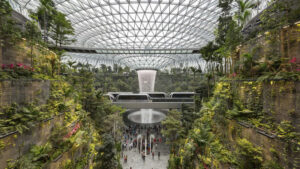Biophilia, published in 1986 by renowned biologist Edward O. Wilson, presents a groundbreaking concept that explores humans’ innate connection to nature. Wilson defines “biophilia” as a love of life and living systems, a deep biological tendency that shapes our emotional and cognitive responses to the natural world. The book suggests that this affinity for living things is an intrinsic part of our evolution, influencing how we interact with our environment and shaping our health and well-being.
The work is an interdisciplinary reflection that combines biology, ecology and philosophy, proposing that the connection between humans and nature is not only instinctive, but essential for our survival and quality of life. Wilson argues that the alienation of people from nature, a result of urbanization and industrialization, contributes to several psychological and environmental problems.

The book is a call for the reintegration of human beings with nature, not only for ethical and ecological reasons, but also for psychological reasons.
With accessible and engaging writing, Wilson addresses topics such as the evolution of human behavior in relation to the environment, the impact of natural landscapes on the human mind, and how our increasing disconnection from the natural world can have adverse consequences for health and well-being. He argues that the design of built spaces should reflect this biological need, advocating for the integration of natural elements into cities and living spaces.
In short, Biophilia offers a visionary perspective on how humans can reconnect with nature to create a more sustainable future, both ecologically and emotionally. The book continues to be a source of inspiration in areas such as architecture, interior design and urbanism, where the concept of biophilic design has gained relevance as a way to promote environments that favor human well-being.
Wilson's work also sparks reflections on the impact of natural landscapes and healthy environments on human psychology, becoming a point of reference for current discussions on neuroarchitecture and sensory design.
